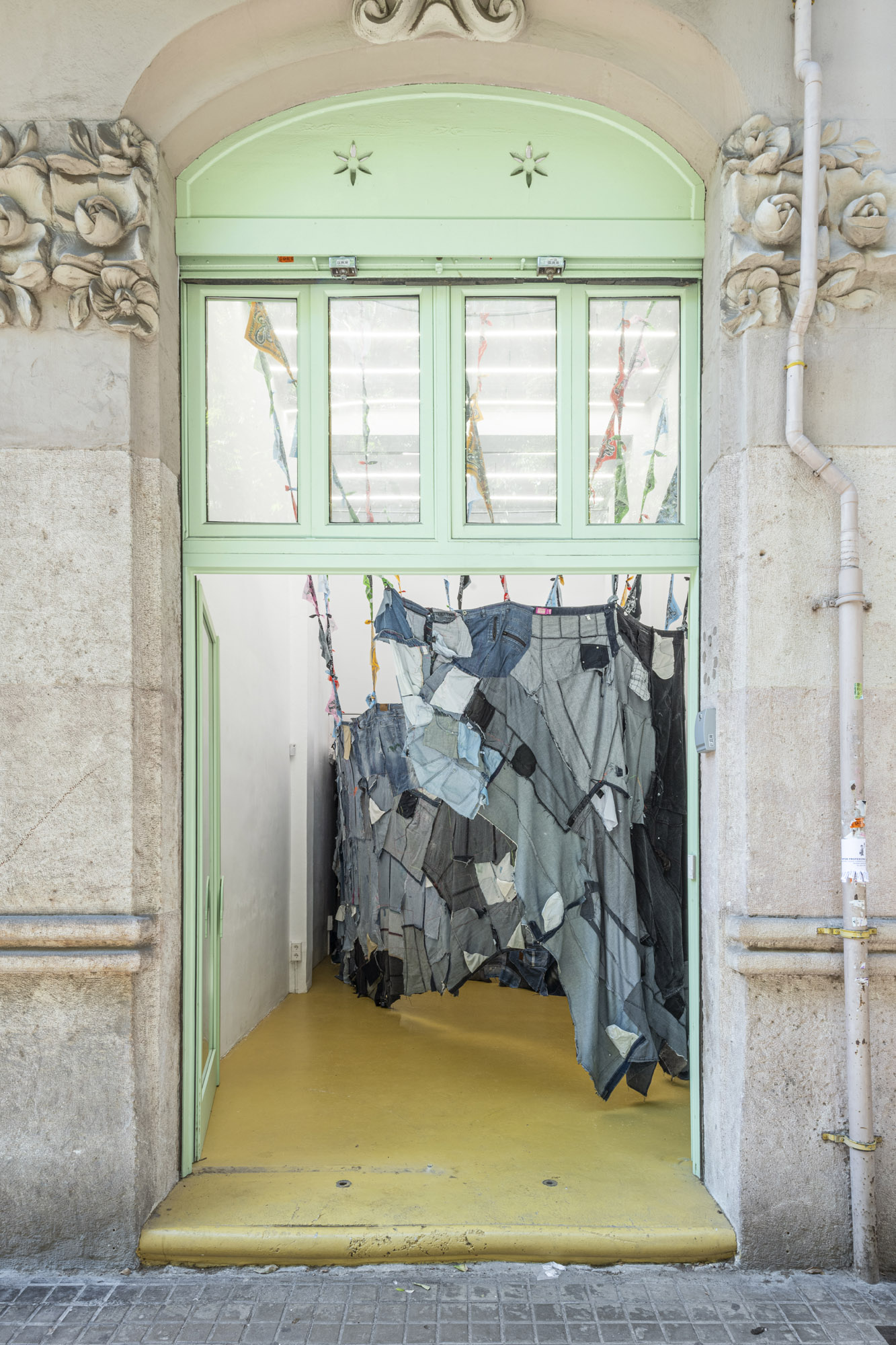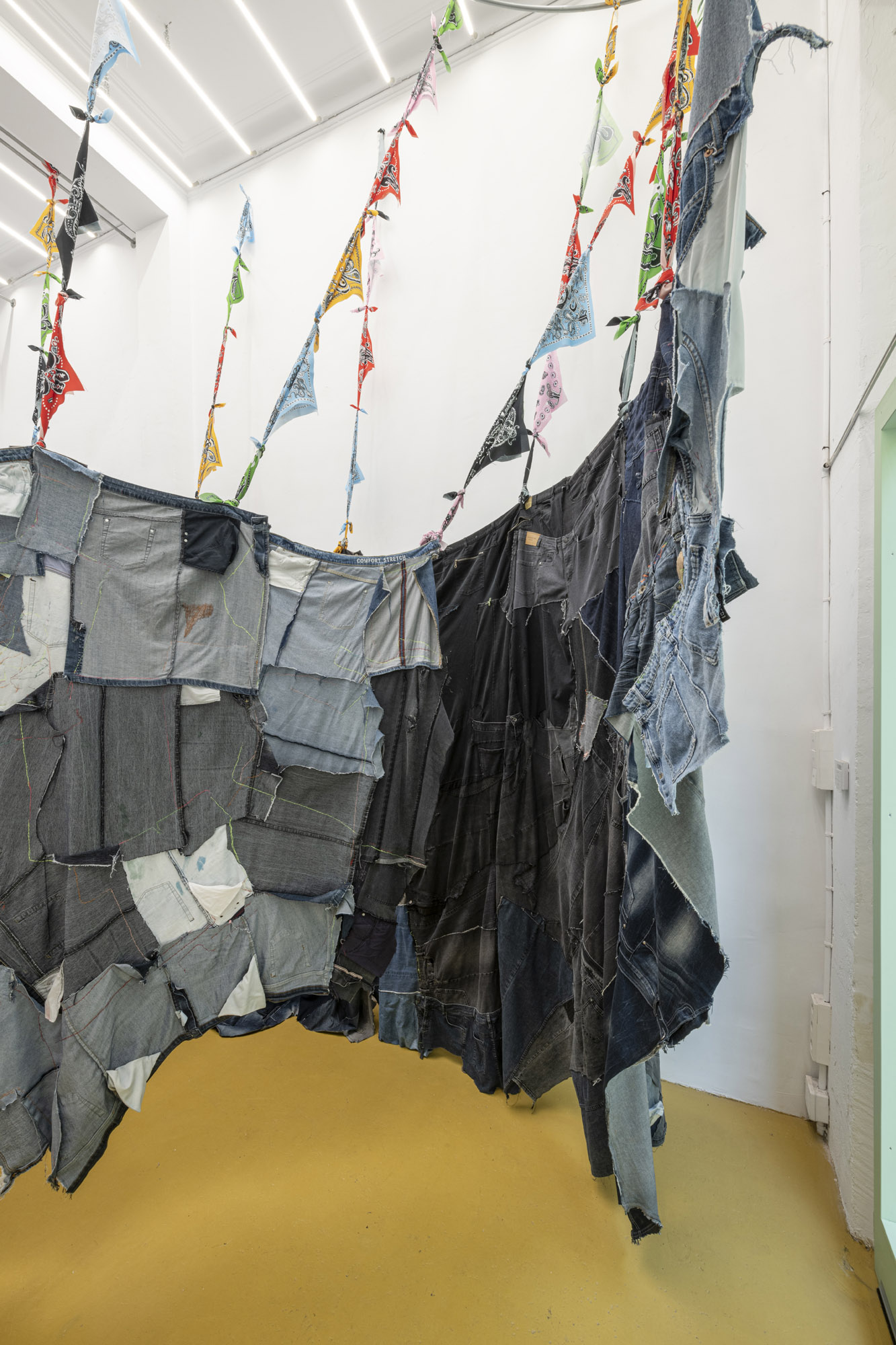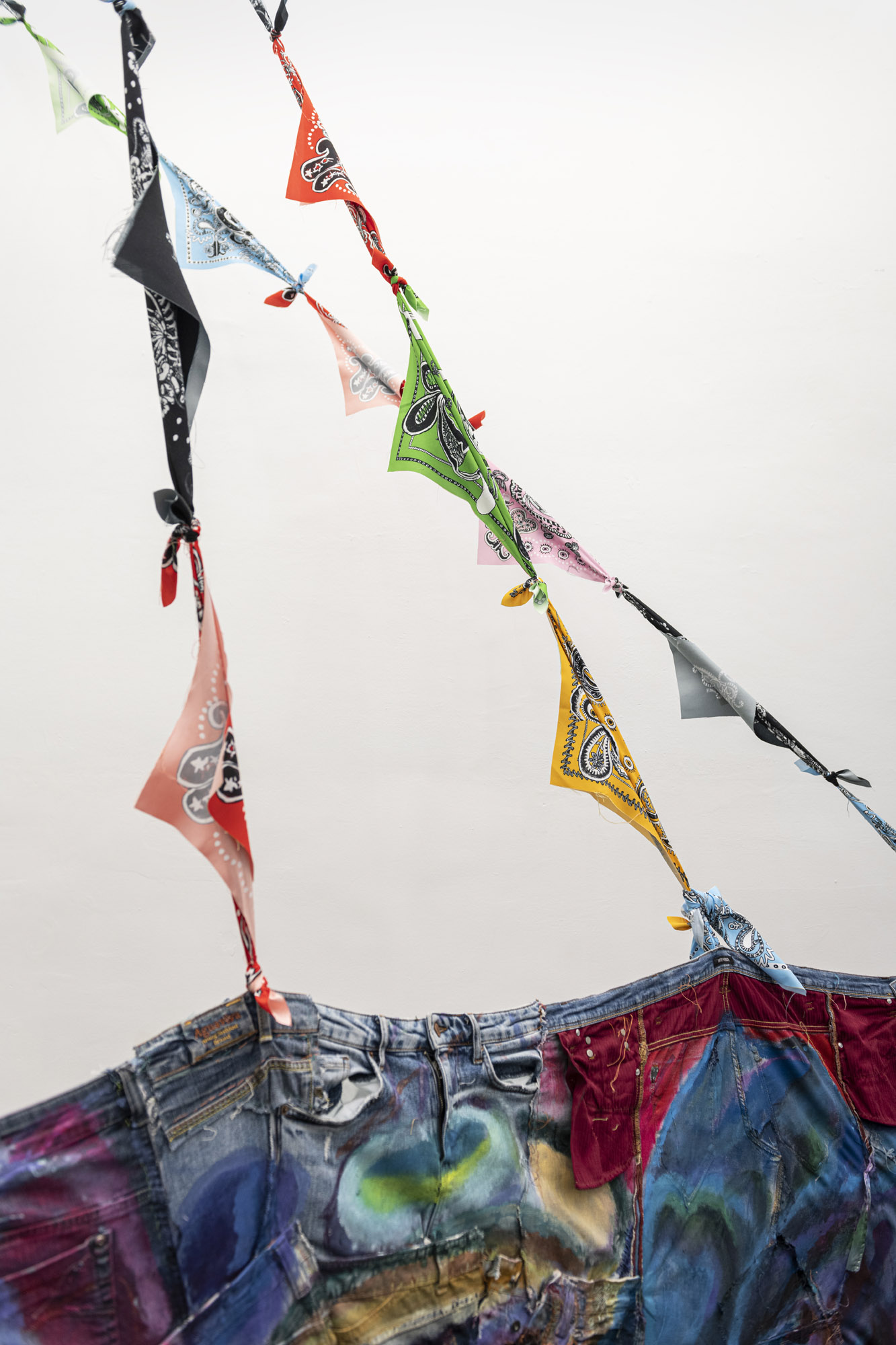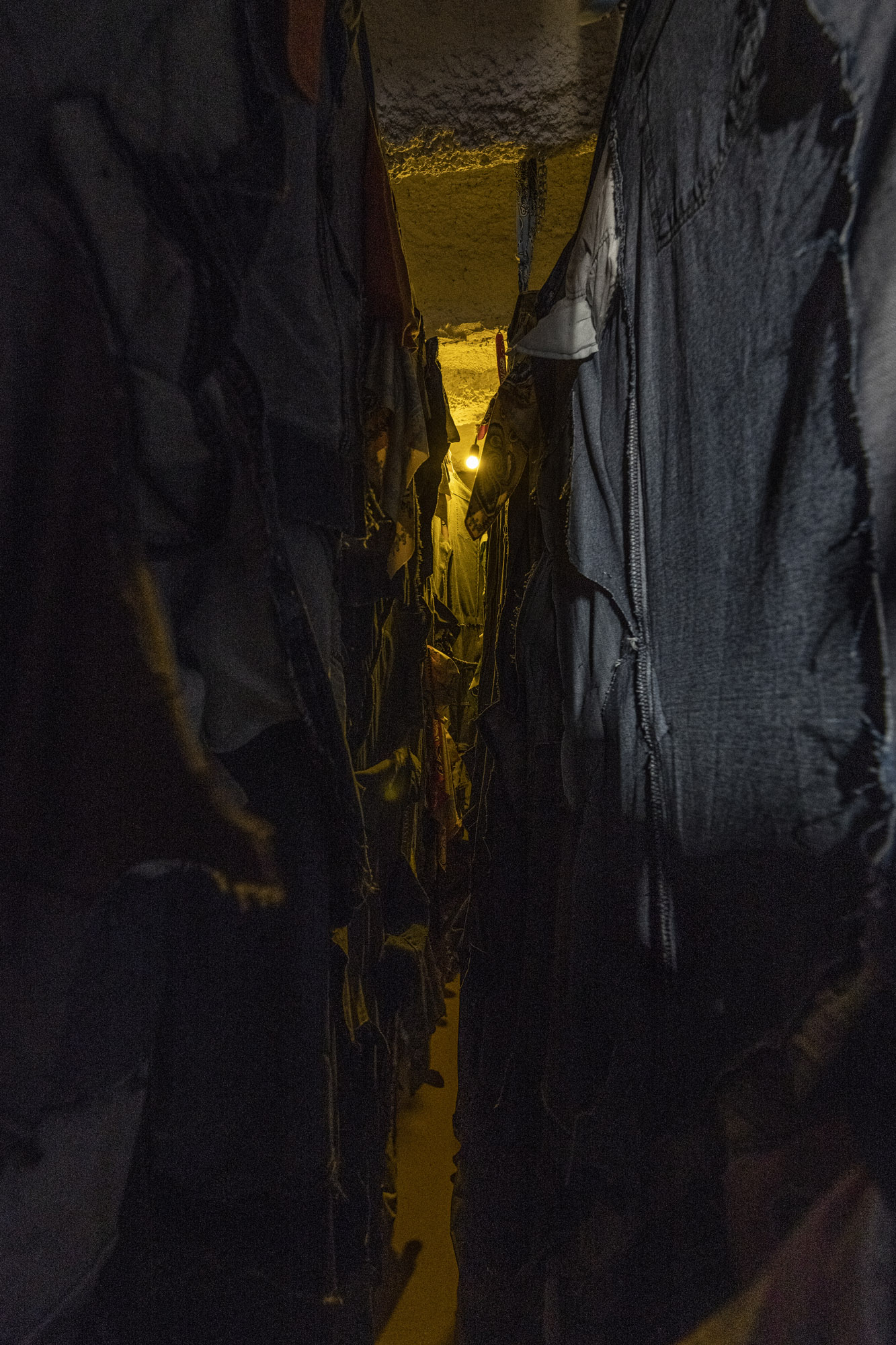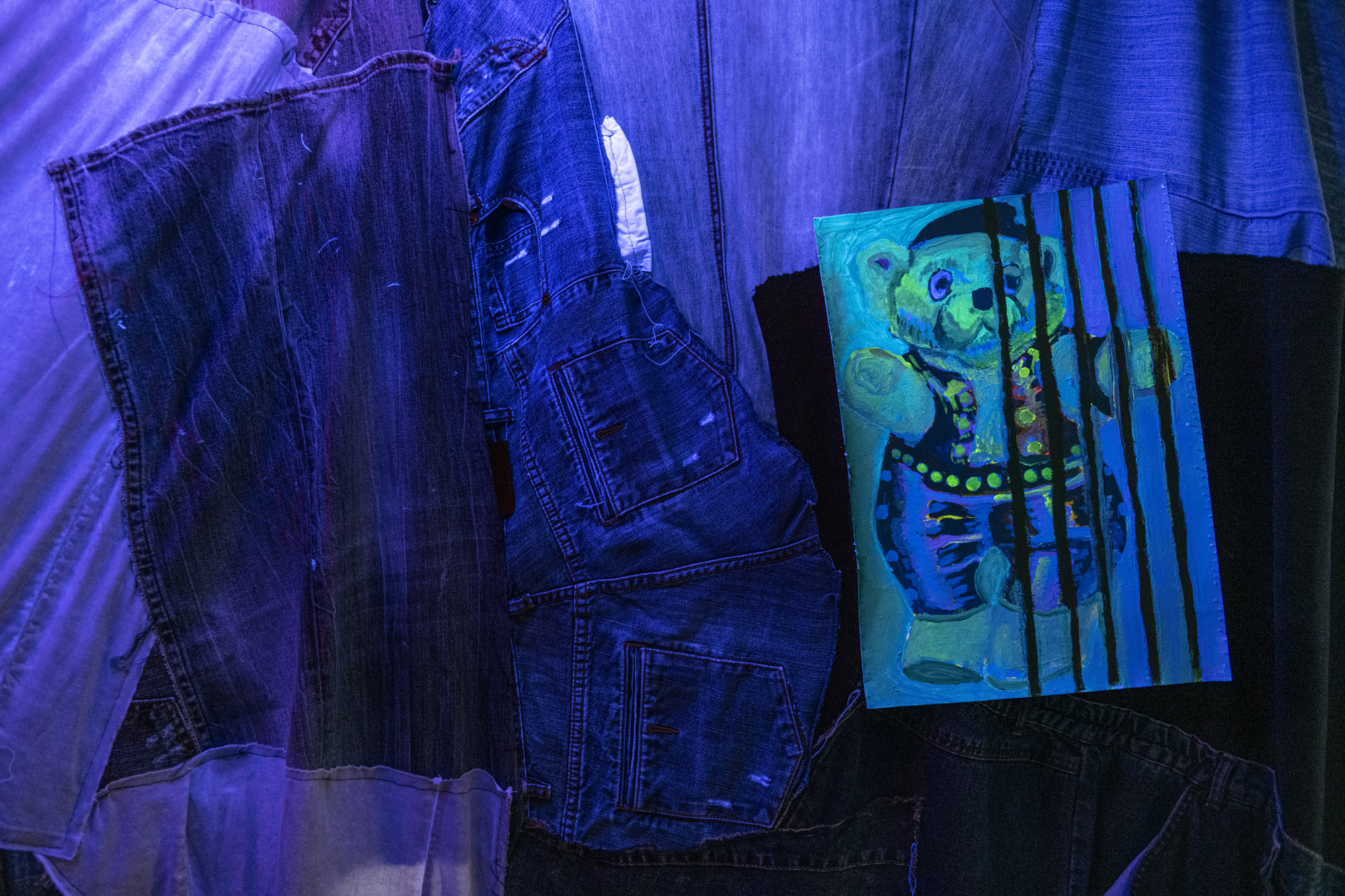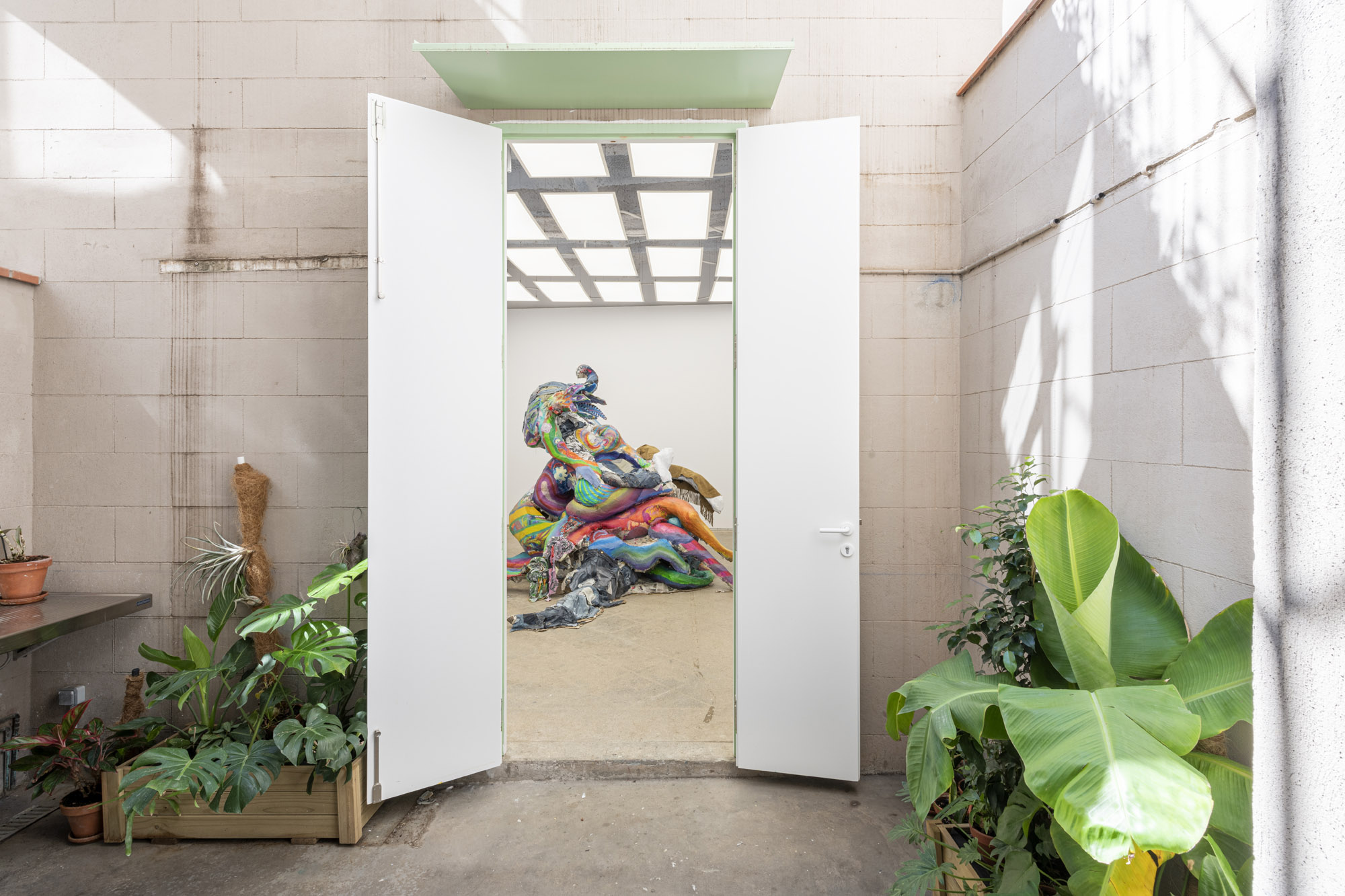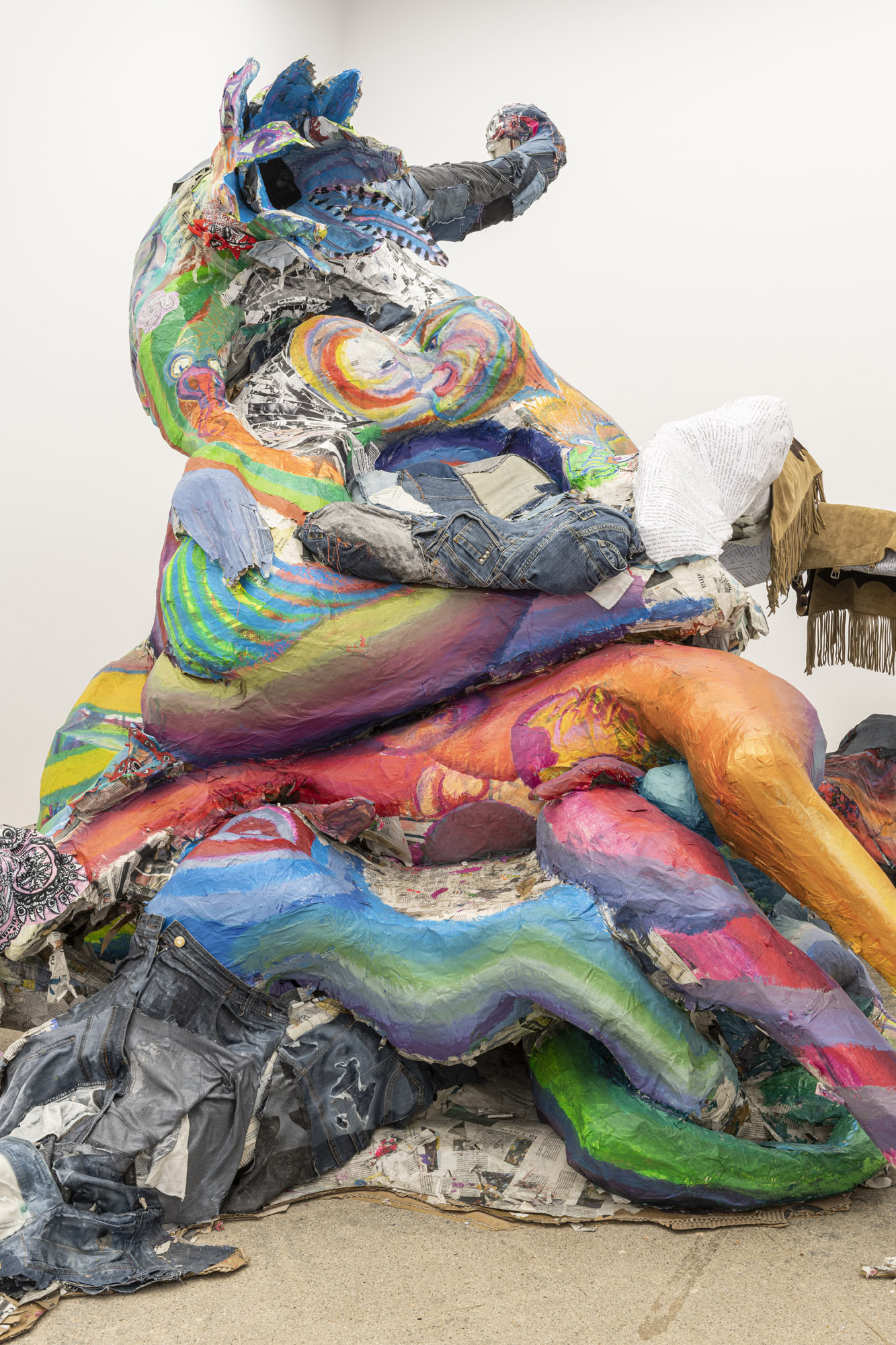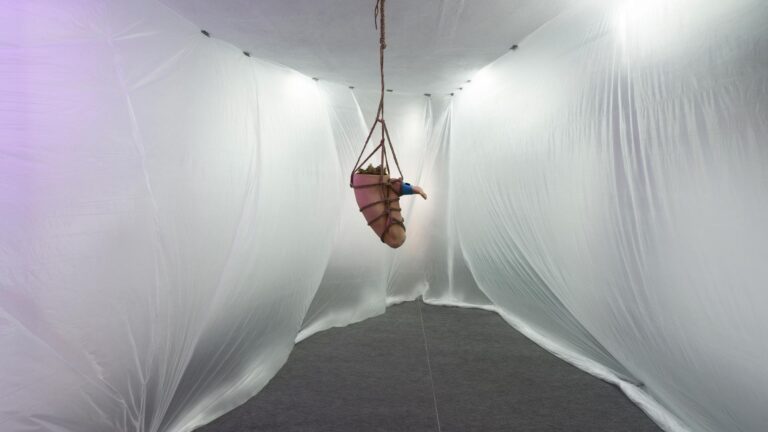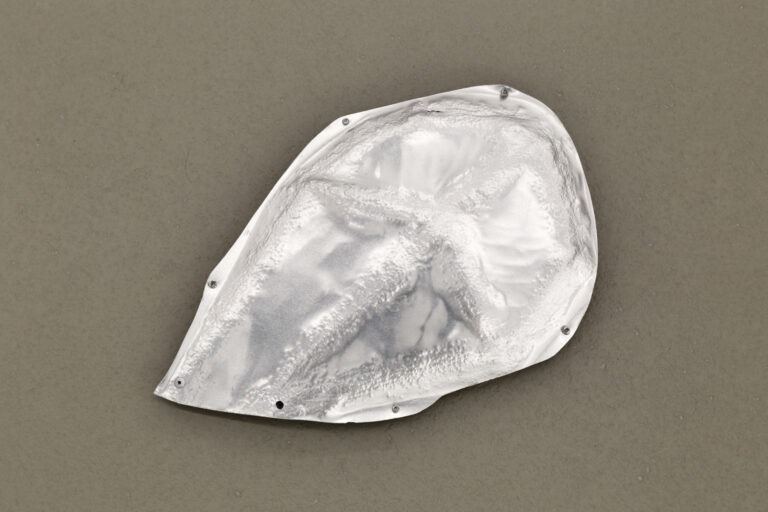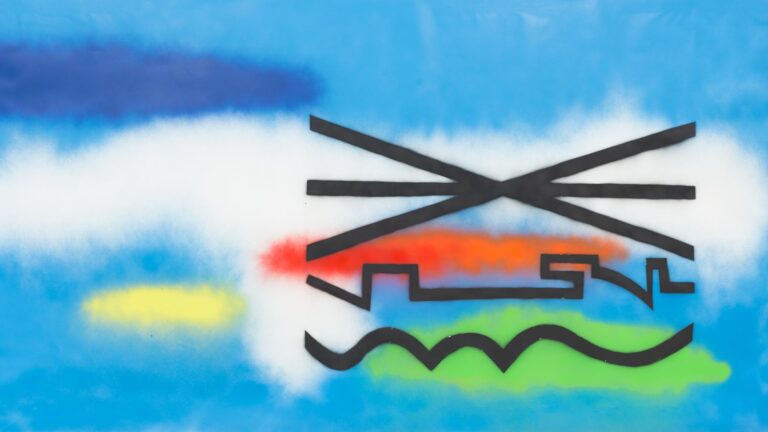Artist: Antoni Hervàs
Exhibition title: The Awakening
Venue: The Green Parrot, Barcelona, Spain
Date: September 23 – November 18, 2022
Photography: ©Roberto Ruiz / all images copyright and courtesy of the artist and The Green Parrot, Barcelona
The Awakening is a site-specific installation by artist Antoni Hervàs (Barcelona, 1981) at The Green Parrot.
In the early 1950s, drawer George Quaintance (1902-1957) reproduced masculine scenes set in times and places such as the Wild West. He made them innocent enough so to avoid legal prosecution. In 1962, Chuck Arnett painted the famous mural at The Tool Box club. That same year, an article in Life Magazine described San Francisco as the gay capital of the United States. At that time, body worship and gyms became mainstream. A recognisable form of identity was being constructed and drawing served as a tool to satisfy fantasies.
Emotions, archives, history, experiences are fluidly merged towards a place, towards a series of superimposed layers through colour and drawing. Scenes of both light and shadow of the experiences of the artist Antoni Hervàs in the Tom of Finland community: the Foundation, the clubs, the characters, and his legacy.
The touch, the rub and the surface of the jeans transport us to those halls of cowboys who wear jeans, impeccable shirts and dance bachata with hats and bandanas. We continue into the darkness, full of possibilities and expectations. When we disengage from the prevailing visual culture we feel discomfort, claustrophobia, adrenaline. We are brushed by the fabrics that remind us of the bodies that wore them, the underwear that opened or ripped, their liquids, their smells, their energies. The small fantastical characters of the bandanas haunt us, they laugh slyly. Fauns, demons, mermaids and tritons merge with the mariachi and the cowboy. Colour is code of non-verbal recognition, of being part of a collective. Hervàs transforms it into fantasy so as to take it to a queer terrain, which also evokes a greater freedom in the representation of identities.
We blindly move through a hallway, like a passage between light and darkness, which is also related to the different phases of the life of Tom of Finland and his clique, which begins from repression up to the seventies, and after a brief liberation falls back into difficulties with the onset of AIDS. The group became very close, especially during the most difficult moments. This romantic idea of returning to earth and surrendering his body to the voluptuousness of nature and pleasures follows the tradition of the Norse mythology of Valhalla. He never wanted to create a place of worship.
The sculpture, kinetic and monumental, captures these experiences and stories, where the dead and the spirits merge fluidly to allude to death as well as to pleasure, illness and the fusion with nature. The multiple colours of the bandanas reappear on faces and bodies. Hidden in the sculpture are various characters, various stories. Black Magic was a collection of sketches made by Tom of Finland over a period of ten years in which the characters – some well-defined, others subtly marked – seem to be having relations with ghosts and mystical characters. The archive of photocopied images of the entire group also appears, accessible and easily distributed material linked to the punk, gay and activist scene. So much so that the first images of Tom of Finland were pirated and photocopied ad infinitum. It is the throne, the shoe shiner’s chair, the fetishism of leather, enjoyment, which has something mystical, pleasurable, and infernal about it. We read some texts by Olaf, a contemporary journalist who writes from darkness and mysticism.
An exhibition of one drawer over others, which also reflects on the medium itself and the fear of the distribution and circulation of material – fanzines, photocopies, postal mail – that could land you in jail. Some stamps as a method of connection, avoiding revealing the names of the letters. On the clothing of the working class, the textile produced in series, the jeans as an identity symbol. Identity and community as the basis of the journey of reading the codes and interpreting them in a personal way. The “awakening”, that wakening or realisation when recognizing the desires that are going to give you both satisfaction and pain, reveals as many lights as shadows, but without separating itself from the pleasure that infuses them.


